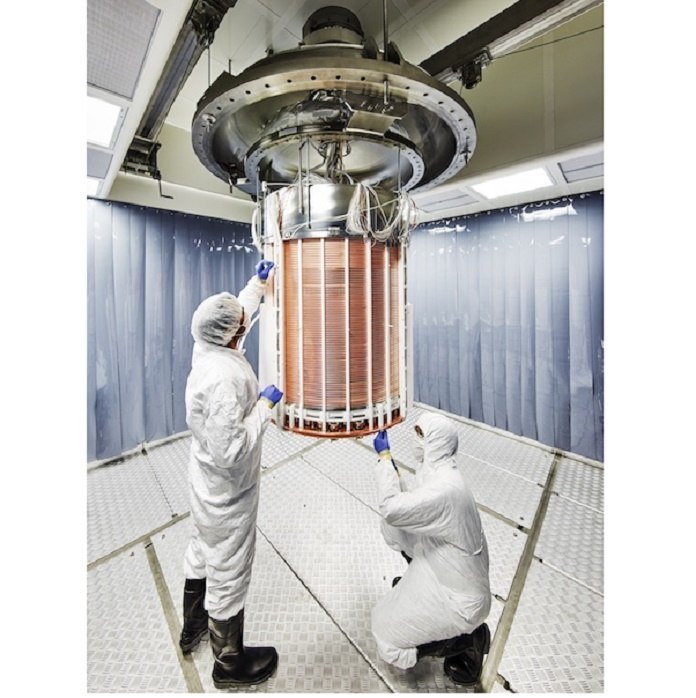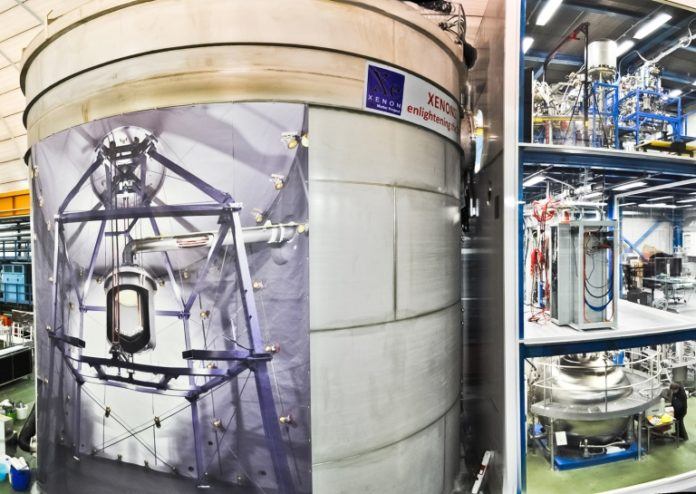Almost 85% of the universe is covered with dark matter. Dark matter is 5 times more abundant than ordinary matter and is responsible for bending light. This affects the gravity of nearby bodies and adjusting a galaxy’s shape. Understanding the dark matter is a little bit difficult but also essential to understand the size, shape, and future of the universe. But, it requires scientists to develop technologies never before used.
To do so, scientists at the University of Zurich created the world’s most sensitive dark matter detector. Scientists named this system as XENON1T. This is for the first time, scientists used a giant vat (3.2 tons) of liquid xenon to create this dark matter detection system. Xenon is an element that’s usually a gas at room temperature, buried deep in mine shafts or in mountains.
Xenon — the colorless, odorless, and dense atomic number 54— seems like the perfect material for the detector. It produces the lowest possible radioactive content, making those pings of particle interference a little bit easier to identify.

Laura Baudis, a professor at the Physik Institute of the University of Zurich said, “I think the most exciting thing is the fact that the detector works as we expect.”
According to scientists, sensitive dark matter particles only interacts very weakly with the nucleus of regular matter atoms. Those particles hit the liquid xenon nuclei and produce light particles or knocking off an electron. The time between the initial photon signal from the strike and another photon signal from a released electron migrating out of the experiment determines where in the chamber the dark matter would have struck. A particle interaction in liquid xenon makes light flashes.
Luca Grandi, assistant professor of physics at the University of Chicago and member of the XENON Collaboration said, “The care that we put into every single detail of the new detector is finally paying back. We have excellent discovery potential in the years to come because of the huge dimension of XENON1T and its incredibly low background. These early results already are allowing us to explore regions never explored before.”
The XENON1T central detector is not visible. It sits within a cryostat in the middle of the water tank, that keeps the xenon at a temperature of -95°C without freezing the surrounding water. The mountain above it, shields this dark matter detector, preventing perturbations from cosmic rays.
Now, scientists are studying and recording to infer the position and the energy of the interacting particle, and whether or not it might be dark matter.
Christopher Tunnell, fellow at the Kavli Institute for Cosmological Physics at the University of Chicago said, “The best news is that the experiment continues to accumulate excellent data, which will allow us to test quite soon the WIMP (weakly interacting massive particles) hypothesis in a region of mass and cross-section with normal atoms as never before.”
“A new phase in the race to detect dark matter with ultra-low background massive detectors on Earth has just begun with XENON1T. We are proud to be at the forefront of the race with this amazing detector, the first of its kind.”
Tunnell said, “It has been a large, concentrated effort and seeing XENON1T back on the front line makes me forget the never-ending days spent next to my colleagues to look at plots and distributions. There is no better thrill than leading the way in our knowledge of dark matter for the coming years.”
